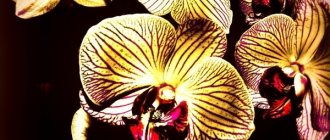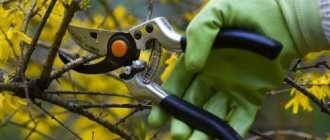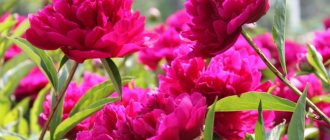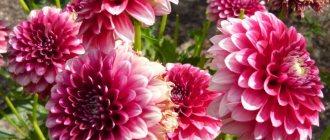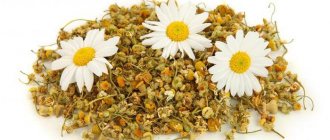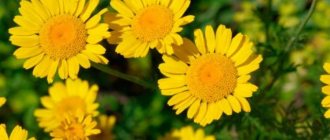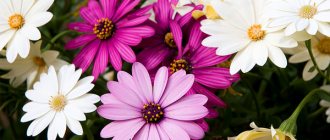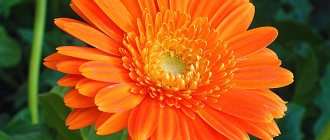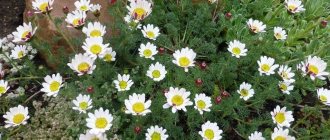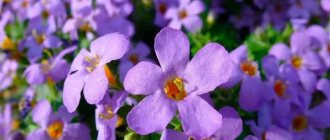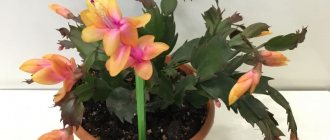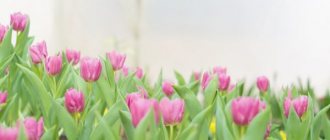Chamomile is a fairly delicate and unpretentious plant. It is found in fields, meadows, and steppes and belongs to the herbaceous representatives of the Asteraceae family. In total, ordinary people know more than 70 varieties of colors. In addition to white, there are pink, yellow, and lilac flowers. At the same time, many people are interested in when daisies bloom and how long this period lasts.
The flowering of daisies directly depends on their variety.
Main varieties of flowers
The flowering of daisies depends on their species. The main varieties include those listed below.
Alaska
This plant has large flowers and reaches a height of 90 cm. The inflorescences grow up to 12 cm in diameter.
Plants are usually planted in autumn. At the same time, buds appear on them the following summer.
The culture is considered very unpretentious: it can easily withstand drought and loves sunlight.
Princess
This sun-loving perennial has lush white inflorescences. It does not exceed 35 cm in height. At the same time, the opened buds have a diameter of no more than 10 cm.
Chamomile Princess loves moist soil. It is characterized by a long flowering period. When do daisies appear? Flowering begins in July. The plant may stop blooming only in mid-October.
Daisy Princess
North Star
This crop is very popular among gardeners. It is very drought tolerant and has beautiful white flowers.
The length of the stem is 60-70 cm. It is not recommended to place seedlings in shady parts of the garden. Plants can be planted in spring or autumn. In this case, flowering will begin only in the second year.
Nivyanyk
This is a fairly large plant, reaching 90 cm in height. In this case, the opened buds exceed 15 cm in diameter.
The plant is considered frost-resistant and can easily withstand drought. However, abundant watering will help you get more spectacular flowering.
The main types of cornflower include:
- common or meadow chamomile - flowering begins in mid-May and continues until the end of July;
- magnificent - is a bush plant with large white inflorescences, the diameter of which reaches 10-15 cm;
- largest - the plant has branched shoots and baskets with a diameter of 12-15 cm;
- Kuril - widespread and has a stem 20 cm long;
- hybrid - represents the work of breeders and is characterized by high strength, stability and longevity.
Nivyanik is a crop with fairly large flowers.
Chemical composition
Chamomile is actively used in traditional and folk medicine because it has a healing chemical composition. To understand the benefits of the plant, it is enough to describe each substance included in the flowers:
- coumarin – gives flowers aroma, helps relieve the allergic properties of the plant;
- apigenin – reduces inflammatory processes in the body, has a preventive effect against neoplasms;
- pectin – helps cleanse the intestines, reduces the absorption of toxic substances in cells;
- chrysin – a sedative substance in the plant;
- ascorbic acid – has a stimulating effect on tissues, strengthens the immune system, and is a powerful antioxidant;
- tannins – restores the functioning of the stomach and intestines, prevents inflammation of the gastric mucosa.
In addition, the parts of the plant contain substances such as carotene, which is responsible for the formation of the human skeletal system, as well as potassium, copper, iron, manganese and other trace elements. All these substances affect the functioning of the human body and have a positive effect on cells and organs.
Colored daisies: types and description
Thanks to advances in breeding, today there are more than 100 colorful species of daisies.
The most popular varieties include:
- Pyrethrum pink - has many types that differ in the richness of the shades of the petals. The crop is also called Persian chamomile. It does not tolerate excess or deficiency of moisture. The plant can be grown in the shade. It is characterized by a long flowering period. It continues all summer.
- Red pyrethrum - resembles pink. At the same time, large bright red inflorescences are considered a feature of the culture.
- Yellow Doronicum is a perennial plant that has bright yellow petals. The flowering of the crop begins quite early. It blooms in mid-March. This month the plant reaches a height of 70 cm. The crop multiplies quickly and does not require special care. It easily withstands frosts and is considered undemanding in terms of lighting.
- Dark blue chamomile is an annual that grows up to 60 cm in height. The culture is best known for its use in cosmetology and medicine for the production of essential oils.
- Orange chamomile - also called orange chamomile. This is a perennial herbaceous plant that has narrow bright orange petals. This variety loves the sun and grows quickly.
Pyrethrum pink has beautiful bright inflorescences.
Large chamomile family
Globally, all types of Matricaria can be divided into 2 large groups: wild settlers of fields, meadows, forest edges and cultivated inhabitants of park flower beds, front gardens, and flower beds. These are representatives of the Asteraceae family, also called Asteraceae. They are inhabitants of all possible habitats, including fields, meadows, forests, mountains, etc.
This wide flower family includes about two dozen different low-growing, fragrant herbaceous plants that begin to bloom from the very first year. Literally a month and a half from the moment the first shoot breaks through the ground, it will begin to bloom.
Sometimes it is also customary to use the common name chamomile in relation to many other plants from other genera. But all of them are similar in appearance to Matricaria and are members of the Aster family. The appearance of wild varieties is not as refined as that of their garden counterparts, but field plants are also unique and beautiful.
The following well-known flowering herbaceous plants are included in this family: aster, gerbera, heliopsis, doronicum, cornflower, osteospermum, pyrethrum, navel, echinacea, three-rib, chrysanthemum.
Visually, daisy flowers have the darkest center of the inflorescence, and the surrounding petals are most often white or other shades. The leaves are not all the same and can have a wide variety of shapes and sizes.
The described signs are considered exclusively external manifestations and strictly scientifically calling all these species chamomile is absolutely incorrect, despite the fact that this is practiced in everyday life.
Biological rhythms of plants
All processes that occur in plants are rhythmic in nature. Chamomile petals and leaves are sensitive to natural changes. The daily rhythm of a flower depends on the location of the moon and sun.
According to numerous studies, 13 biological processes occur in chamomile, which are repeated from time to time, forming a single rhythmic system.
Flowers open and close at specific intervals. They also depend on seasonal cycles and daylight hours.
Chamomile petals begin to open at 6 am. In this case, the plant blooms during the day. This interesting phenomenon is called photoperiodism. However, it is important to focus on the geographical location of the site, the time of sunrise and sunset. Therefore, the algorithm directly depends on the area.
If chamomile is moved to a dark room, periodic movements will persist for 9-10 days. However, then her tissues will experience a lack of nutrition.
The biological rhythm of a plant can change depending on the climate. This must be taken into account when growing crops.
Flowering of daisies ordered by time
How to plant a large garden chamomile in the garden?
Before planting garden chamomile, it is imperative to prepare the soil for more efficient absorption of the shrub, regardless of how it is grown.
The most successful option for transforming any soil into a favorable environment for any variety is considered to be fertilizing with universal flower fertilizers. They can be either organic (low concentration) or mineral. Although, if you wish, you can purchase special preparations for such purposes in the store.
When and how to plant?
If the method of sowing seeds was chosen for planting, it is better to start growing in March. It’s good if you plant the seeds not in open ground, but in special containers (disposable plastic cups can be used), because there they will germinate better and be better accepted on the site.
Seedlings are planted at the beginning of May, so that the plant has time to assimilate into the new environment.
When the ground is ready, holes are dug for planting, 20-30 cm deep with indentations of 20-40 cm from each other. After planting, the plant is watered abundantly with clean water or diluted means to stimulate growth.
Chamomiles will begin to bloom within a year.
When is the best time to replant garden chamomile?
September is a good time for transplanting and dividing bushes, since an adult plant is accepted quickly and already feels comfortable in a new place by the cold weather.
When they bloom depending on the region
Chamomile is a typical summer flower. Therefore, answering the question of when exactly daisies bloom, it should be noted that in most territories this happens in the last days of May.
In the southern regions of Ukraine and Kazakhstan, daisies can bloom as early as April. The same periods are typical for the foothill regions of the Caucasus and Crimea.
Answering the question when is the daisy season in the Mediterranean, it must be said that it comes even earlier. For example, on the islands of the Aegean Sea, in the southern regions of Greece and Italy, thickets of culture appear already at the end of February. Here, the growing season and fruiting of some plants occur even in winter.
As you move north, flowering time shifts closer to summer. When do daisies bloom at the latitude of Kyiv and Voronezh? This happens in mid-May. At the same time, in the Moscow region flowers bloom at the beginning of June, and in the northern regions at the end.
The timing of flowering directly depends on the climate of the region.
How to grow a large garden chamomile on a plot?
There are no particular difficulties in planting daisies in the garden. At the same time, you can grow a shrub in several ways: using seedlings, dividing bushes or sowing seeds.
Seedling growing method
With the help of seedlings, chamomile is planted quite often and very effectively. This growing option is well suited for areas subject to severe frosts. Although mature bushes tolerate cold much better than seeds. Plant seedlings at intervals of 25-30 cm, 3-4 plants each.
Dividing the bush
By dividing the bushes, the best growing results are achieved. Although this method is considered the simplest, only daisies that have reached the age of 3-5 years are suitable for it. The replanting procedure is carried out in early autumn so that by winter the flower is fully established in the soil.
Stories from our readers!
“I am a summer resident with many years of experience, and I only started using this fertilizer last year. I tested it on the most capricious vegetable in my garden - tomatoes. The bushes grew and bloomed together and yielded more than usual. And they didn’t suffer from late blight, that’s the main thing.
Fertilizer really gives more intensive growth to garden plants, and they bear fruit much better. Now you can’t grow a normal harvest without fertilizer, and this fertilizing increases the amount of vegetables, so I’m very pleased with the result.”
Growing from seeds
Summer residents sow seeds extremely rarely, since this method of planting is not so popular due to its low efficiency.
But by doubling the number of seeds in the hole, you can still grow several healthy shrubs. It is better to buy seeds in trusted specialized stores along with accompanying drugs and mineral fertilizers to strengthen growth and stimulate absorption.
Flowering period and timing
Many people are interested in when daisies bloom. The specific time directly depends on the variety and variety of crop.
- During flowering, the bushes first bloom with peduncles located on the central axis.
- Then flowers appear on the side branches. Flowering of each of them lasts from 7 to 10 days.
- However, under natural conditions, there are cases of flowering of the basket within 3 weeks.
Uneven development of flowers and shoots increases flowering time to 1-2 calendar months. As a consequence, the periods of seed ripening are also extended in the time interval.
Culture is valued by many gardeners and landscape designers. This is due to its brightness and decorative properties.
What month do they start?
Pharmacy chamomile begins to bloom 30-40 days after the sprouts appear. This usually happens in the first half of June. Moreover, in July it is already allowed to collect valuable heads. The flowering of the crop lasts all summer. In warm southern regions, the flower blooms already in May.
Other varieties of daisies bloom around the same time - in June or July.
If ordinary people are interested in when do field daisies fade? This usually happens in the first half of September. Therefore, the question of whether daisies grow in August should be answered in the affirmative.
The pharmaceutical variety begins to bloom 30-40 days after the sprouts appear.
Large garden chamomile in landscape design
- Chamomile can grow on its own, decorating fences or flower beds near a country house.
- Chamomiles are often planted near gazebos or benches, because tall flowers enclose the space, and looking at the romantic snow-white inflorescences is much more pleasant than looking at cucumber beds.
- For a more rich landscape picture, giant daisies are planted mixed with delphiniums, cornflowers, bells and lilies.
- An arrangement of white daisies and red roses, yellow tulips or pink peonies looks good.
- Many gardeners are experimenting with chamomile varieties, planting shrubs with inflorescences of different colors.
Flower collection and use
The flowering period of daisies lasts from May to autumn. Therefore, it is possible to collect inflorescences over such a long period approximately 6 times. It is recommended to dry them in the shade or in the fresh air.
It is advisable to keep the resulting raw materials in textile bags, bags or paper boxes. This should be done for a maximum of 1 year.
Pharmaceutical chamomile can be used in its pure form or mixed with other herbal infusions. They should be used for diseases of the digestive organs - intestinal disorders, ulcerative defects, gastritis.
The plant has mild sedative and analgesic properties. Therefore, it can be put into tea and consumed when overworked, sleep disturbances and overexertion.
The flowers of the plant can be used to make tea.
Brief information
The botanical name of chamomile is Matricaria. The origin of the name is the Latin language, in which it means “uterus”. In ancient times, healers used the plant to treat female diseases (even in those ancient times, medicine was aware of the amazing healing properties of chamomile flowers).
In terms of prevalence in almost all regions of the Earth, it is almost a record holder. Familiar white flowers can be found in Europe and Asia, the Americas, the African continent and even Australia.
In many world folk traditions, field daisies were used in various rites and rituals. Slavic girls have long woven wreaths from them to decorate their heads. According to popular beliefs, chamomile flowers brought health, goodness and tenderness.
Reproduction by dividing the bush
Reproduction of daisies is done by dividing the bush into parts, or rather its rhizome is divided into parts. Each part should have its own rosette of leaves. It is best to divide the plant into parts and replant it in the spring, when its leaves begin to grow. But you can do this at the end of summer, when flowering is complete.
The chamomile bush grows quickly, so the bush is divided every three years. If you grow a bush in the same place for a long time, its growth will occur at the edges, and the plants in the center will die. It should be noted that next year the cuttings produce powerful stems and large flowers. In order for daisies to bloom longer, it is necessary to constantly cut off flower stems with wilted flowers . By winter, the stems of daisies need to be cut back to the rosettes. The rosettes of leaves remain green until snow falls.
Care
In the future, when the seedlings take root, care for them as usual: loosen them, feed them with liquid organic matter, remove faded flowers to stimulate new ones, water them, remove weeds.
Advice from flower growers
- For propagation, it is better to choose a double variety of garden chamomile, since the flowers are larger and more beautiful, there are always many buds, and re-blooming is possible at the end of summer.
- Despite its frost resistance and hardiness, the flower can freeze in a winter with little snow, so it is sprinkled with a thick layer of peat, straw, and covered with spruce branches.
- Chamomile gets along well with any ornamental plant: with the beautiful lily and rose, field poppy and cornflower.
- In the search engine results for the query “garden chamomile, large perennial planting and care,” sometimes there are articles devoted to chamomile, which is a related, but still completely different medicinal wild plant. The technology of its cultivation and use differs from decorative chamomile. Therefore, you should carefully read the text of the article to determine what type of chamomile (decorative or medicinal) we are talking about.
Garden chamomile is considered not only an adornment to any landscape design, but in many ways it brings love and good luck to the house, where household members begin to live in peace and harmony. Combining well in height and size with other flower crops, it fits harmoniously into any flower garden, giving it a unique and eye-catching appearance.
